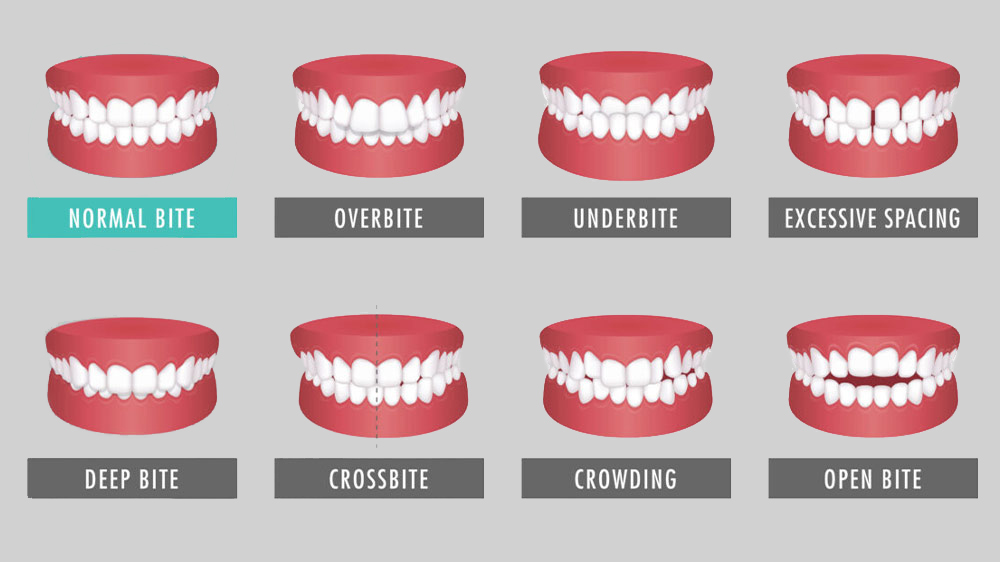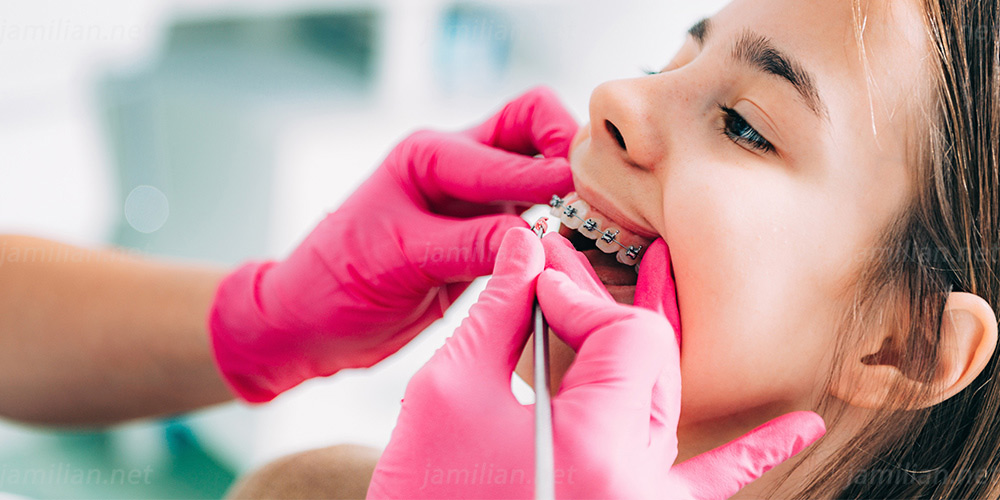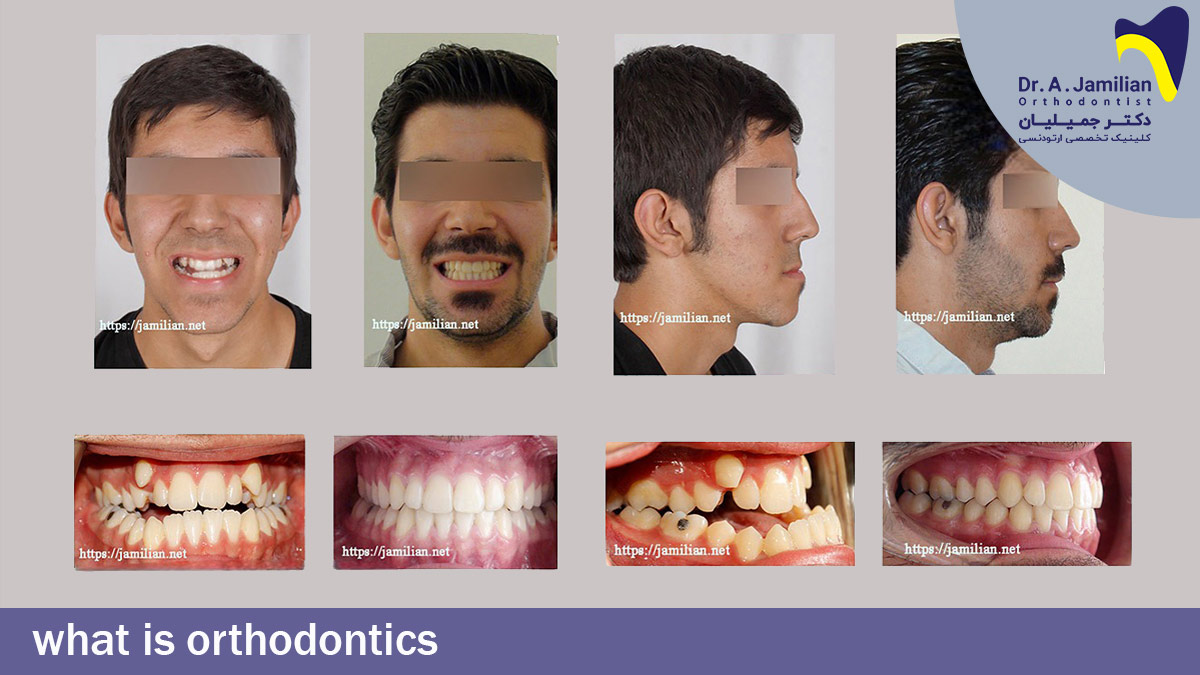Orthodontics is a branch of dentistry that corrects teeth and jaws that are in the wrong place. Improperly positioned teeth with an unusual shape can cause a variety of health problems. It becomes harder to keep your teeth clean. A patient with misaligned teeth is at risk for tooth decay and periodontal disease. This condition puts more pressure on the teeth and consequently leaves various complications in the long run.
Complications of not Performing Orthodontics in Maxillofacial Malformations
If orthodontics is not performed for patients with maxillofacial malformations; various complications will occur for patients. These include tooth decay, gum problems, poor chewing of food, and digestive problems. TMJ headaches and pain in the neck, shoulders, and back are other complications of jaw and tooth abnormalities and lack of orthodontic treatment. Also, crooked and irregular teeth damage the beauty of the patient’s appearance.
The benefits of orthodontic treatment include a healthy mouth, a pleasant appearance, and teeth that are likely to last longer. A dentist in this field is known as an orthodontist.

How to Know if You Need Orthodontics?
Only an orthodontist can determine the necessity of orthodontics for you. Your orthodontist determines the necessity of orthodontics treatment by the help of diagnostic tools that includes a complete medical and dental history, a clinical examination, a plaster model of your teeth and special imaging. An orthodontist can decide if you need orthodontics or not. And this is an orthodontist who can propose a proper treatment plan for teeth problems.
Types of Dental Problems that Need Orthodontic Treatment?
If you have one of the following conditions, you may be an orthodontic candidate.
- Overbite, when the upper teeth overlap on the lower teeth.
- Underbite, seemingly known as “bulldog”, in which the lower row teeth are placed far ahead of the upper teeth and the upper row is too far behind.
- Cross bite is an abnormality during which one or some of the upper teeth locate behind the lower l tooth.
- Open bite occurs when having space between two jaws in the front, back or lateral sides.
- Misplaced midline occurs when the midline of the upper teeth with the midline of the lower teeth is not matched in the same direction.
- Spacing between teeth, which may result from loss of a tooth, or a group of teeth.
- Dental crowding This problem occurs when there is space deficiency in the arch. This problem is due to extremely large teeth, small jaws, and a combination of both situations.

Types of dental problems that can be treated with orthodontics
Introducing Orthodontic Treatment Methods
Orthodontics is one of the dental specialties that is used to arrange the teeth and coordinate the jaws. The main task of orthodontics is the diagnosis, prevention and treatment of dental malocclusions. This can be done by fixed or removable orthodontic appliances. Fixed orthodontics includes the same color braces as tooth (ceramic), or by the lingual system (placement of braces behind the teeth). Fixed orthodontic treatments can be done by Straight, Edgewise, Damon methods, straight wires such as Roth. MBTH and so on. Nowadays a new method introduced to orthodontics as an invisible method which is named Invisalign or clear aligner. Meanwhile, new techniques such as Mini screw could be used for treating teeth abnormalities and malocclusions.
There are several types of orthodontic appliances. Removable and fixed orthodontics, both of which help to change the position of the teeth and jaws. Orthodontic appliances move the dentition in the desired direction. The degree of deformity of the teeth, age and physiological characteristics of the patient determine which types of orthodontic should be selected for treatment. It is an orthodontist who by examining the patient’s condition determines and implements orthodontic treatment at any stage.

Invisible orthodontics
Objectives of Orthodontic Treatment
Orthodontics treatments are classified under 2 groups: one of the two orthodontics treatments is for correcting teeth and the other group is for treating jaw malocclusions. Each of which requires a specific appliance for treatment of malocclusions. If a patient with dentofacial malocclusion goes to orthodontics at the appropriate time and cooperates with them during the course of treatment, their problems will be treated easily by orthodontics. However, if the patient is late for treatment and does not cooperate or has severe malocclusion, jaw surgery might be necessary for fixing the jaw problem. In these cases, the patient will be treated using surgery after performing the orthodontics treatment.
Dr. Jamilian’s Orthodontic Samples
To see more orthodontic works, you can refer to the before and after orthodontic image gallery. In this section, you will see some of these portfolios. Depending on the deformity of the jaw and teeth, different orthodontic treatments are considered. Your illness may be similar to one of these. In this case, you can see the recovery after treatment in this area.

Orthodontics before after treatment by orthodontist doctor jamilian
How Long Does Orthodontics Bracketing & Teeth Wiring Take?
Based on the type of malocclusion, patients might need fixed or removable orthodontics for orthognathic surgery plus orthodontics. The type of orthodontics appliances are determined by the type of malocclusion. In case of suffering from jaw anomaly, the patient might need one and half years for fixing the jaw complication and an additional one and half year for fixing the dental problem. For patients with only dental problems, the course of treatment is only one and a half years. The duration of orthodontics bracketing and wiring is 30 minutes.

The Best Age for Orthodontics Treatment
It is recommended to pay a visit to an orthodontist upon noticing dental or jaw malocclusion in your child. Visiting an orthodontist in time provides you with enough time to be prepared for a carefully planned orthodontics treatment. The best time for the orthodontics treatment is at age 8 and before the onset of puberty. However, this does not mean that people who are older than 14 or 18 or younger than 8 years old cannot benefit from orthodontics treatment. Although, people younger than 8 years old should only have orthodontic treatment if there are dental or jaw malocclusions. The orthodontics treatment in adults may take slightly longer than treatment in children. However, they will finally achieve a favorable result.
Orthodontist FAQ
1-Nutritional Guide During Orthodontics Course of Treatment?
During treatment you should steer clear of corn and junk food, colored, and hard food. It’s recommended to consume foods filled with calcium, minerals, and vitamins. Drinking cold beverages could be helpful during this period.
2-What Should We Do If Brackets Come Loose or Break?
In this case, call your orthodontist and make an emergency appointment. Being reckless as in this example, can disrupt your course of treatment.
3-How to Clean Orthodontics Brackets?
For cleaning fixed orthodontics brackets use a special orthodontics brush. Using a higher amount of chlorhexidine mouthwash than recommended during this period could lead to yellow teeth. Therefore, use appropriate amounts of mouthwash during orthodontics treatment to prevent yellow teeth.
4-Do Orthodontics Brackets Affect Speech?
The first few days, you may develop a slight lisp, however, after a few days, you become more used to the brackets and being pronouncing words correctly. This problem may last longer in lingual orthodontics.
5-How Often Should We Visit the Orthodontist for an Examination?
The time between visits varies depending on the type and stage of treatment. it depends on the orthodontist’s opinion. However, on average it could range from 2 weeks to 2 months. Orthodontist reminds patients for the next session after each appointment.






